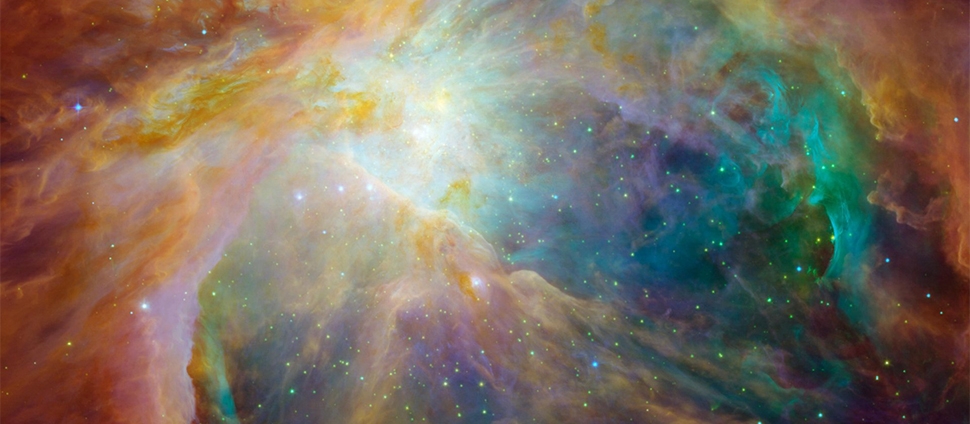Document Type
Article
Publication Date
8-1-2017
Publication Title
The Astrophysical Journal Letters
Abstract
We report the detection of CO(2–1) emission coincident with the brightest cluster galaxy (BCG) of the high- redshift galaxy cluster SpARCS1049+56, with the Redshift Search Receiver (RSR) on the Large Millimeter Telescope (LMT). We confirm a spectroscopic redshift for the gas of z = 1.7091 ± 0.0004, which is consistent with the systemic redshift of the cluster galaxies of z = 1.709. The line is well fit by a single-component Gaussian with an RSR-resolution-corrected FWHM of 569 ± 63kms−1. We see no evidence for multiple velocity components in the gas, as might be expected from the multiple image components seen in near-infrared imaging with the Hubble Space Telescope. We measure the integrated flux of the line to be 3.6 ± 0.3 Jy km s−1, and using aCO = 0.8 Me (K km s−1 pc2)−1, we estimate a total molecular gas mass of 1.1 ± 0.1 × 1011 Me and a MH2/Må ∼ 0.4. This is the largest gas reservoir detected in a BCG above z > 1 to date. Given the infrared- estimated star formation rate of 860 ± 130 Me yr−1, this corresponds to a gas depletion timescale of ∼0.1 Gyr. We discuss several possible mechanisms for depositing such a large gas reservoir to the cluster center—e.g., a cooling flow, a major galaxy–galaxy merger, or the stripping of gas from several galaxies—but conclude that these LMT data are not sufficient to differentiate between them.
Keywords
galaxies: clusters, individual (SpARCS1049+56), galaxies: evolution, galaxies: starburst, ISM: molecules
Volume
844
Issue
L17
DOI
doi.org/10.3847/2041-8213/aa7749
Rights
© 2017. The American Astronomical Society. All rights reserved.
Version
Version of Record
Recommended Citation
Webb, Tracy M.A.; Lowenthal, James; Yun, Min; Nobel, Allison G.; Muzzin, Adam; Wilson, Gillian; Yee, H.K.C.; Cybulski, Ryan; and Hughes, D. H., "Detection of a Substantial Molecular Gas Reservoir in a Brightest Cluster Galaxy at z = 1.7" (2017). Astronomy: Faculty Publications, Smith College, Northampton, MA.
https://scholarworks.smith.edu/ast_facpubs/4


